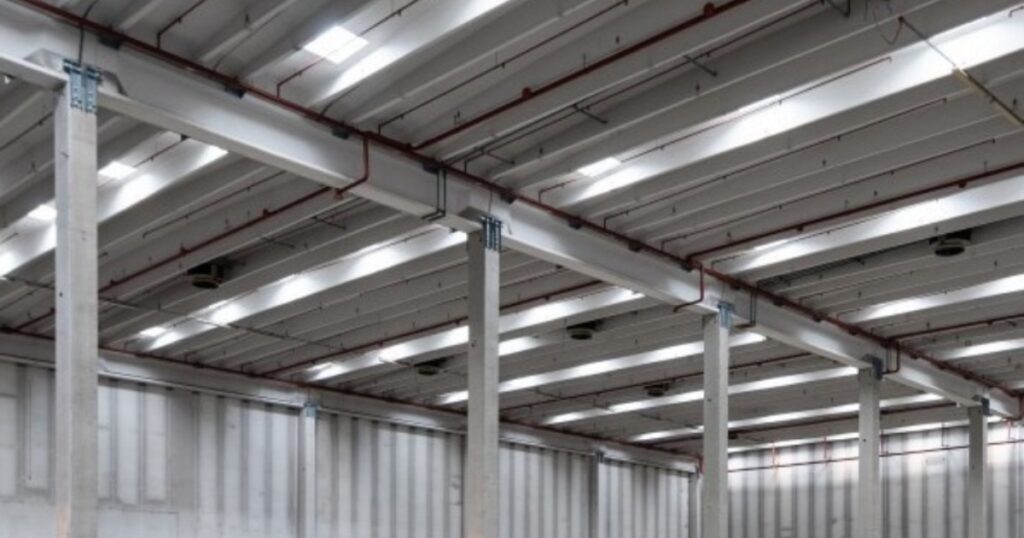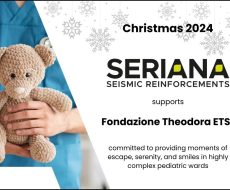
May 8, 2025
Everything that is important to know about seismic improvement of warehouses
In Italy, a large percentage of primary production activities are located between the North East in the pre-Alpine area and the central Apennines, which are the Italian areas that have the highest seismic risk in the area.
Following the seismic events that hit the regions of Emilia Romagna, Lombardy and Veneto on 20 and 29 May 2012, the Government issued the Prime Ministerial Decree of 21 May 2012 (Emilia Decree) with which the risk of compromising primary interests was declared and, from then on, further measures were taken to protect companies within these territories.
Also due to this decree, it was highlighted how prefabricated warehouses built before the 2008 NTC had inadequate structural characteristics to withstand potential seismic events, demonstrating the almost urgent need to act on these types of buildings with structural reinforcement works.
Argomenti

How to recognize pre-fabricated warehouses to be seismically improved
The initial characteristics to assess to understand whether it is necessary to carry out an anti-seismic improvement intervention are:
Year of construction:
In most cases, warehouses built before 2008 were designed and built following anti-seismic standards that were not updated and less safe than those in effect today.
Generally, the structures that are most in need of seismic improvement are older warehouses, especially those built in the 1980s, i.e. the most obsolete structures built without complying with anti-seismic regulations.
Regulations in force:
The current Italian technical standards are the NTC 2018. The “New seismic standards for structural calculation” are aligned with the system of European regulations and with the design standards used in countries with a high seismic danger worldwide.
The technical standards for construction have been profoundly improved starting from the publication of the Ordinance of the President of the Council of Ministers (OPCM) 3274 of 2003 and the subsequent issuing of the NTC 2008, which since then, cannot be extended.
The seismic zone in which the buildings are located:
The potential exposure to damage caused by seismic events is proportional to the area in which the warehouse was built.
In Italy, there are areas that have a greater seismic risk than others, in fact, all the municipalities in the area have been classified according to their seismic risk, attributing them to a specific seismic zone based on the frequency and intensity of past earthquakes and consequently foreseeing the need to apply specific regulations for the construction of buildings based on seismic risk.
Most frequently asked questions about seismic improvement of warehouses
Is it mandatory to seismically improve an industrial warehouse built before 2008?
The current construction sector technical standards do not specify the obligation to reduce the seismic risk on an existing construction prior to 2008, but concern only new buildings and the obligation to build them following the seismic safety standards dictated by them.
However, it is also necessary to consider Legislative Decree no. 81/2008 (Consolidated Law on the protection of health and safety in the workplace) as a regulatory reference.
This decree prescribes measures with the aim of protecting the health and safety of “users” and “workers” in all work environments, both public and private, through scrupulous research into occupational and non-occupational risks.
These objectives are followed through the drafting of the “Risk Assessment Report” and the consequent elimination or containment of the identified risks before they produce potential damage or unwanted effects.
Therefore, if this assessment has revealed the inadequacy of the level of seismic resistance of the company building, it is necessary to identify precise protection and prevention interventions, among which seismic improvement will most likely also be present.
Are seismic improvement interventions in pre-fabricated structures invasive?
When considering intervening in structures that host a production cycle that cannot be interrupted, it is essential to operate in the least invasive way possible.
Thanks to this need, local strengthening interventions have been developed, which are performed locally, on structural elements or on individual parts.
These works are often custom-designed for the individual client company, in order to bypass any possible problems.
For example, with interventions that bypass the plasterboard walls by operating exclusively on the masonry, operating from the roof covering or from the outside or scaffolding to climb over machinery or similar.
To do this, an innumerable number of specific restraints have been developed for the most disparate situations, with variable shapes and dimensions depending on the pre-fabricated warehouse on which one is going to operate.
Does the seismic safety intervention force the company to stop production activity?
No, through a series of measures it will be possible to implement the intervention without interrupting the company production cycle.
The main strategy will be to alternate the construction site with production activities.
For example, interventions can be carried out during traditional company closure periods when production would be suspended anyway.
It is therefore possible to perform a seismic improvement of an industrial warehouse by working with a massive workforce, in a short time and without interruptions, in such a way as to guarantee the return of the premises in time for reopening of the business.
Or, if the activity follows specific times, working in counter shifts; for example, if a company is active mainly during the day, it may be advantageous to schedule the seismic improvement intervention during the night-time slot or vice versa if the company works at night.
Are there any bonuses for seismically improving pre-fabricated structures?
Yes, in Italy there is an incentive that allows you to offset the costs of making a warehouse seismically safe: the Sisma Bonus, a tax deduction specifically for interventions that improve the seismic safety of buildings located in the most at-risk seismic areas, i.e. the 1, 2 and 3.
This deduction can amount to up to 85% of the costs incurred for anti-seismic interventions on warehouses.
By when do we have to intervene to access the Sisma Bonus allocated to companies?
The 2022 Budget Law extended the possibility of accessing the Sisma Bonus until 31 December 2024, together with that of taking advantage of the invoice discount and the transfer of credit for all construction bonuses.
Furthermore, the obligation of a further check has been introduced, when requesting the approval of conformity and the certification of the adequacy of the expenditure, by the directives of the new Anti-fraud Decree (Legislative Decree 157/2021).
Among the costs deductible with the Sisma Bonus, in addition to safety works at company level, other expenses incurred for verification and seismic classification are also deductible.
How to intervene to seismically improve warehouses
Intervening on the prevention of a dangerous situation such as that linked to the action of an earthquake is important for the reasons explained thus far. In addition to these reasons, however, there are much deeper reasons that push the company to perform such interventions: it concerns the protection of people.
Over time, Seriana S.p.A. has developed the first intervention method applied on over 1,300,000 m2, capable of eliminating any type of interference or inconvenience for production activities. Discover all the characteristics and qualities of the Essezero method now, a system chosen by over 700 companies.






